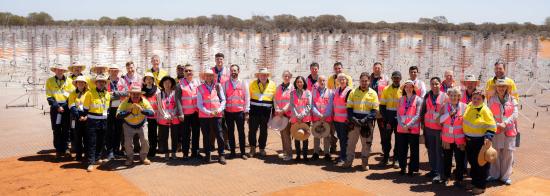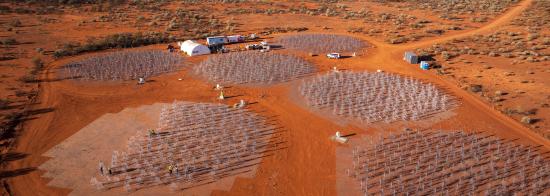Australia
SKA-Low will comprise an array of 131,072 'Christmas tree-shaped' antennas, grouped in 512 stations, each with 256 antennas. The antenna stations will span out along three spiral arms, stretching 65 kilometres end to end.
SKA-Low will be located at CSIRO’s Murchison Radio-astronomy Observatory, a legislated radio quiet zone in remote Western Australia, around 800kms north of the state’s capital city, Perth, and 315kms north east of regional centre Geraldton.
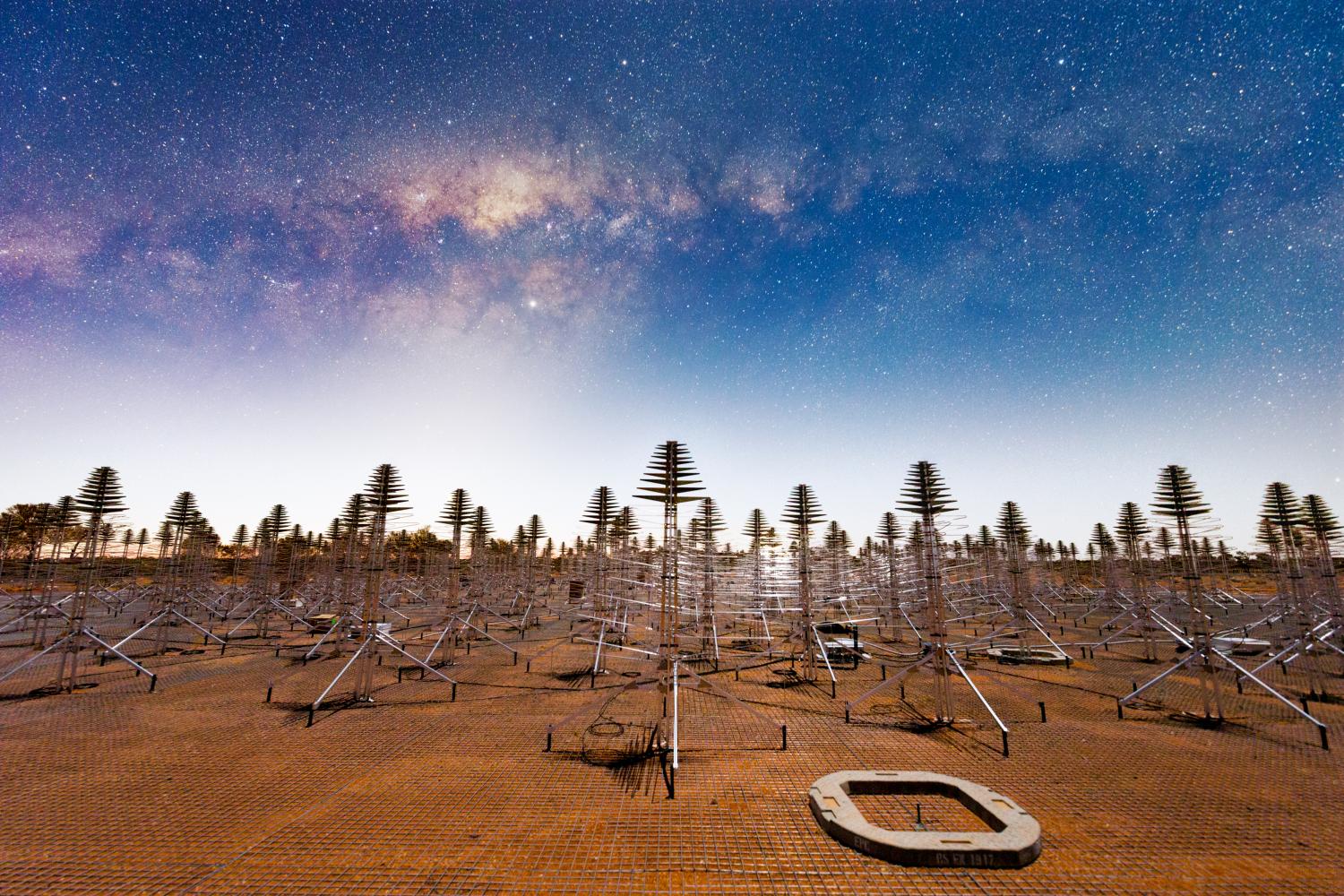
A brief history of Australia's involvement with the SKAO
Since 1945 Australia has pioneered the development of radio astronomy. It hosts some of the world’s most advanced radio astronomy facilities, from the Parkes radio telescope ‘Murriyang’, an SKA pathfinder, to the SKA precursors ASKAP and the Murchison Widefield Array (MWA).
During the design phase of the SKA telescopes, Australian institutions and companies have participated in eight of the twelve international SKA design consortia, providing expertise in signal processing, hardware design, algorithm development, data handling, telescope operations and observatory design and management.
Australia is one of the founding members of the SKA Observatory.
Hosting the SKA
The Murchison Radio-astronomy Observatory (MRO) will host the low-frequency telescope, SKA-Low. CSIRO, Australia’s national science agency, operates the MRO.
The MRO is:
- in remote Western Australia;
- part of the ancestral lands of the Wajarri Yamaji people;
- in the Australian Radio Quiet Zone WA to protect the telescopes from radio interference;
- home to world-class radio telescopes, in addition to the SKA.
Take a virtual tour of the MRO site.
Indigenous engagement
The Wajarri Yamaji, as traditional owners of the MRO site, have played an important role in enabling Australia to co-host the SKA project. The Australian Government is working with the Wajarri Yamaji to negotiate a land use agreement to access the site and realise the SKA project on Wajarri Yamaji country.
This agreement will provide sustainable and intergenerational benefits in areas such as enterprise and training, education and culture.
A Cultural Heritage Management Plan will control future project activities to ensure ongoing protection for Wajarri Yamaji heritage. During the construction phase of SKA-Low, Wajarri site monitors will track and witness construction activities to ensure day-to-day compliance with the Plan.
The Wajarri Yamaji will continue to access the vast majority of the MRO to exercise their native title rights.
Science objectives for the Australian community
The SKA telescopes will provide the opportunity to investigate the Universe as we’ve never seen it before, and Australian researchers are working across many areas of SKAO science and technology.
Australia pioneered radio interferometry, the technique the SKA telescopes use, and Australian researchers have continued to contribute to the advancement of the field of radio astronomy ever since. Australians are involved in all the SKA science working groups, including co-chairing several groups.
The Murchison Widefield Array (MWA) telescope, located at the SKA-Low site, plays a significant role in building expertise in the fields of SKA-Low’s main science goals, in particular the conditions in the very early Universe over 13 billion years ago, probing the cosmic dawn.
The ASKAP telescope, a neighbour to the MWA, is also playing a lead role in building expertise towards SKAO science, including on mysterious objects like fast radio bursts. Its unique design makes it one of the best telescopes for researching radio transients, another of the SKA telescopes' key science goals.
Australia’s national science agency, CSIRO, has been at the forefront of radio astronomy for over 60 years, managing observatories, developing new technologies and revealing the structure of the Universe – all areas of expertise that are feeding into SKAO science and development. CSIRO was instrumental in Australia’s bid to host the SKA project, establishing the MRO as the future SKA site in Australia, and has been involved in the SKA project since its beginning. CSIRO teams manage the MRO and ASKAP, are working towards SKAO technology and construction, and CSIRO is also the SKA-Low operations partner to the SKAO.
In 2009, the International Centre for Radio Astronomy Research (ICRAR) was founded as a joint venture between Curtin University and The University of Western Australia with the specific purpose of supporting Australia’s bid to host the SKA telescope. With 200 staff and post grad students, ICRAR has grown into one of the world’s leading research institutions in radio astronomy, whose staff are contributing to national and international scientific and technical programmes for the SKA project, ASKAP and the MWA.
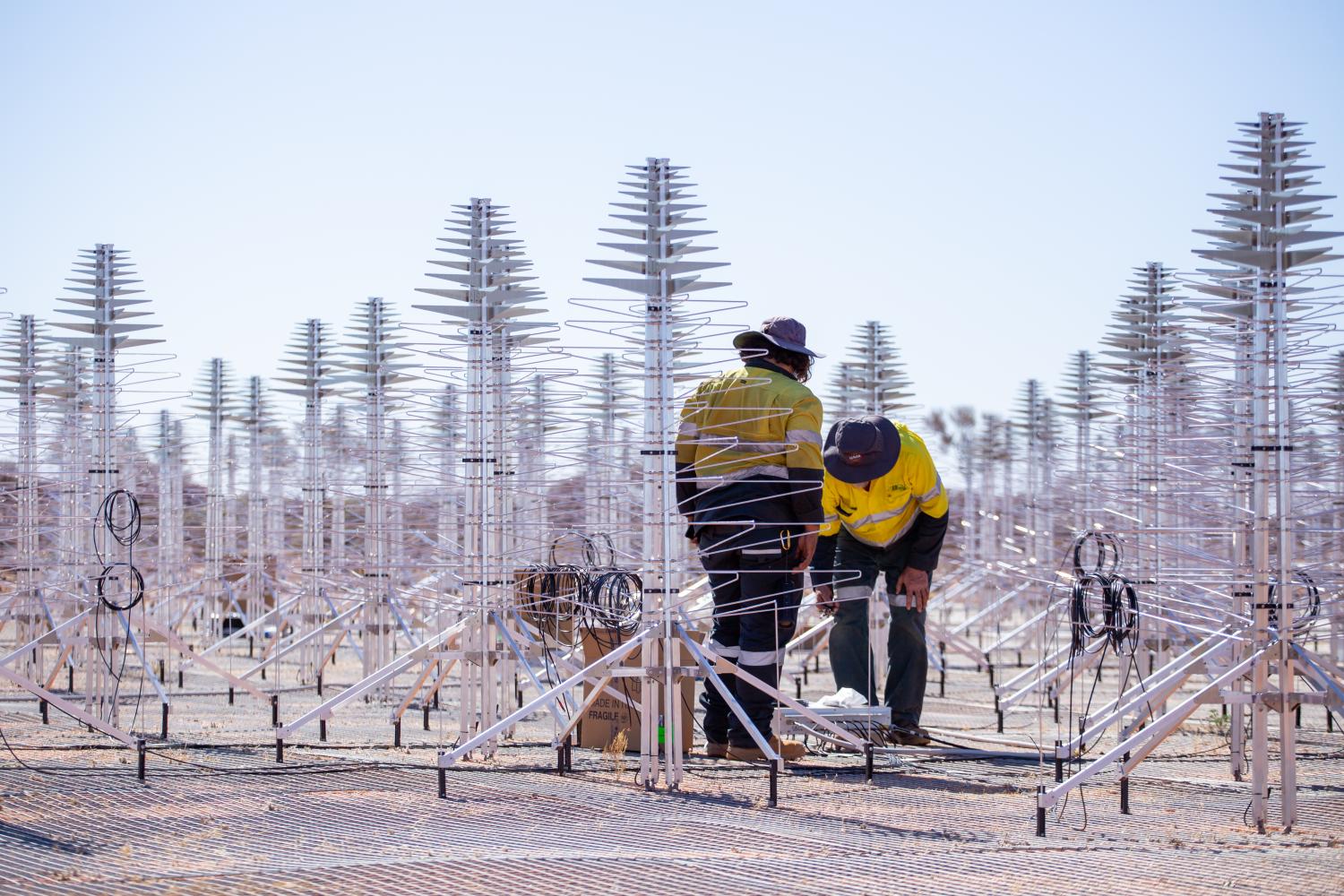
Contracts awarded
Australian businesses will lead construction of SKA-Low infrastructure in Australia and contribute to the development of new technologies used in the SKA project. Developing cutting-edge technology for the SKAO will expose businesses to new skills and capabilities, making them more competitive and opening up new market opportunities.
See all the Tier 1 contracts that have been awarded by the SKAO so far
Australian SKA Regional Centre
The Australian SKA Regional Centre (AusSRC) will enable science with SKA data in Australia.
SKA-Low will produce around 300 petabytes (around 300,000 terabytes) per year of data that science teams around the globe will need to readily access.
SKA member states are forming a collaborative network of SKA Regional Centres (SRCs) to design, build, deliver, and operate end-to-end support for science data products, archives, and associated services.
The AusSRC is a collaboration between CSIRO, Curtin University, the University of Western Australia and the Pawsey Supercomputing Research Centre.
Precursor telescopes
Australia is home to three SKA precursor and pathfinder telescopes. These telescopes have provided crucial design, assembly and deployment guidance for the SKA project and are also world-leading telescopes in their own right.
ASKAP
ASKAP is a high-speed survey instrument consisting of 36 dishes, each 12m in size, at the MRO. CSIRO’s development and construction of the precursor was completed at the end of 2012. ASKAP boasts leading-edge technology, including phased array feeds which give the telescope an extremely wide field of view and the ability to rapidly scan the sky.
This fast-surveying capability was put to the test in 2019 when ASKAP surveyed the entire southern sky in under two weeks – a feat that would have taken over a year with any other telescope. The scientific results were also incredible, with three million galaxies detected including almost one million that had never been seen before. ASKAP scans the sky for specially selected science teams, representing institutions all over the world and hundreds of researchers. Each team is looking at (or for) remarkable things in the Universe. ASKAP is the key instrument for finding rare phenomena like fast radio bursts or odd radio circles.
Murchison Widefield Array
The Murchison Widefield Array (MWA) is a low-frequency (70-300MHz) radio telescope at the MRO. Developed by an international collaboration, including partners from Australia, New Zealand, Japan, China, India, Canada and the United States, the MWA project is led by Curtin University. Fully operational from 2013, the telescope consists of 4096 dipole antennas arranged in 256 ‘tiles’, spread over more than 10 square kilometres.
Since 2013, the MWA has collected 40 PB of data, archived at the Pawsey Supercomputing Research Centre in Perth and served to hundreds of scientists around the world. More than 280 scientific papers using MWA data have been published in high quality journals, attracting more than 10,600 citations. More than 60 postgraduate research degree projects have been supported by MWA data. Overall, the MWA is one of the most productive and cost-effective telescopes in the world and will play a critical role continuing the build a large cohort of experts in low frequency radio astronomy in the lead up to when the SKA is available in the late 2020s.
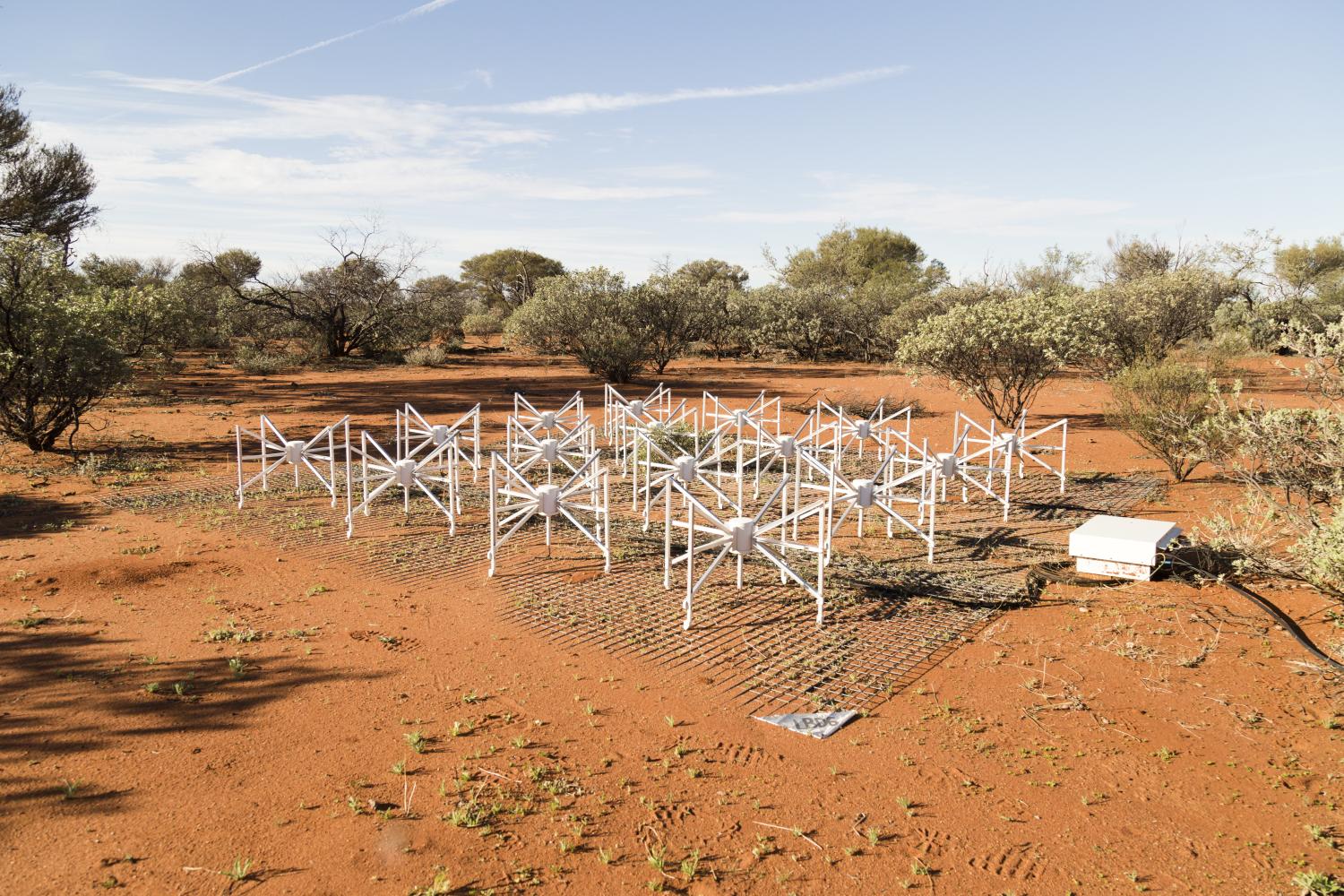
Parkes Observatory
CSIRO’s Parkes radio telescope, Murriyang, has been in operation for over 60 years. Thanks to regular upgrades it continues to be at the forefront of discovery. Located just outside the town of Parkes, on Wiradjuri Country, the telescope is one of the largest single-dish telescopes in the southern hemisphere. The Parkes Observatory is part of the Australia Telescope National Facility network of radio telescopes.
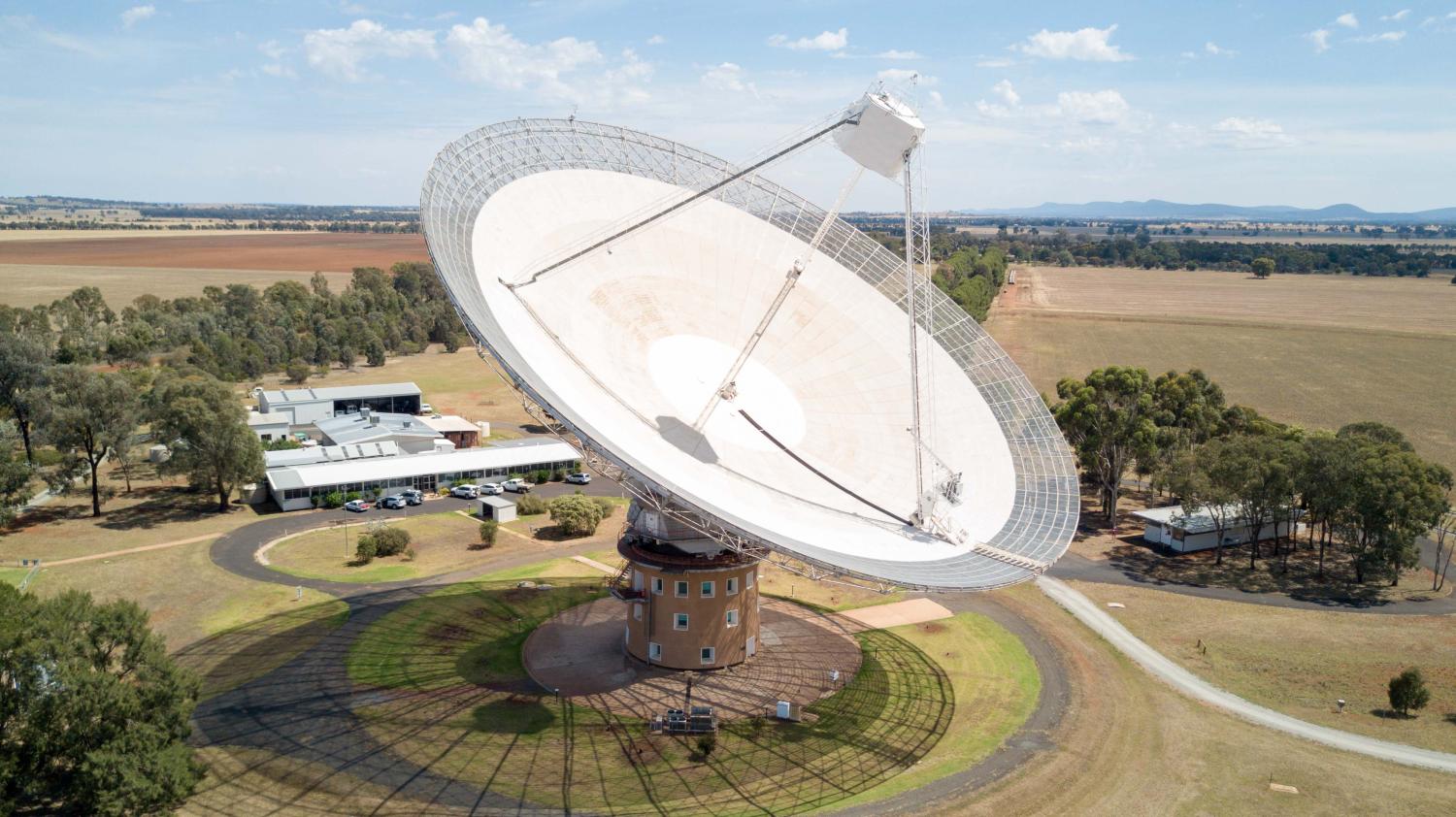
Benefits for Australia
Membership of the SKA Observatory and participation in construction offers a range of scientific, economic, social and reputational benefits. For example, Australia’s leading role in the SKAO and the SKA project demonstrates to the world that Australia is well equipped to partner on Big Science and advanced digital technology projects.
The SKAO has enormous potential to capture the public’s imagination through exciting discoveries about the universe. This will encourage students to consider STEM studies (science, technology, engineering and mathematics), preparing them for the jobs of the future. Training and experience in astronomy also provides advanced, transferrable skills. Half of astronomy PhDs move into non-astronomy fields within 20 years, including design, engineering, science and transport; education; and Information and Communication Technology.
Developing cutting-edge technology for the SKA will expose Australian businesses to new skills and capabilities, making them more competitive. For instance, SKA-Low will be supported by local processing technology to combine the individual signals and transport them to supercomputing facilities that will conduct final data processing and storage. New technologies developed to manage the unprecedented volumes of data will also create commercial opportunities beyond astronomy and support advanced manufacturing techniques.
Radio astronomy has already led to the development of new technologies with far-reaching applications in fields such as computer science, medical imaging, and advanced manufacturing. Similarly, the SKA is expected to generate spin-off technologies with broad applications.
- Case Study – Space Junk
The team at the Curtin University node of ICRAR has translated technologies and techniques from low frequency astronomy and applied them to the development of passive radar for the detection of objects in space (satellites and space debris). Using FM broadcast transmissions that constantly permeate the environment and reflect off objects in space, we detect the reflections and can pinpoint their locations in space and their trajectories. With the growing number of objects in space, the chance of collisions increases (and the possibility of the destruction of billion dollar class assets). Tracking and monitoring objects in space helps to provide warnings for possible collisions. This work has been done in collaboration with Australia’s space industry, in particular with Nova Systems, and connects to priorities of the Australian Space Agency.
- Case Study – Better communication
A new Australian company is commercialising multi-beam technology developed by CSIRO for its ASKAP radio telescope. Quasar Satellite Technologies will use phased array technology to communicate with hundreds of satellites at once. Around 3,000 satellites already orbit Earth, with tens of thousands more scheduled to launch over the next decade. Each satellite needs to communicate with a home base on Earth.
Current ground stations can usually only track one satellite at a time. This causes a significant bottleneck for industries that use data from space. Quasar will allow commercial and government entities to connect with satellites from anywhere in the world, in real time. This is possible through the multiple antenna beams of its phased array – a feature developed to give the ASKAP radio telescope its unprecedented field of view.
For further case studies, visit:
Contact
The Australian SKA Office coordinates Australia’s involvement in the SKA project.
Email: ska@industry.gov.au
For enquiries regarding the MRO, contact mrose@csiro.au.





